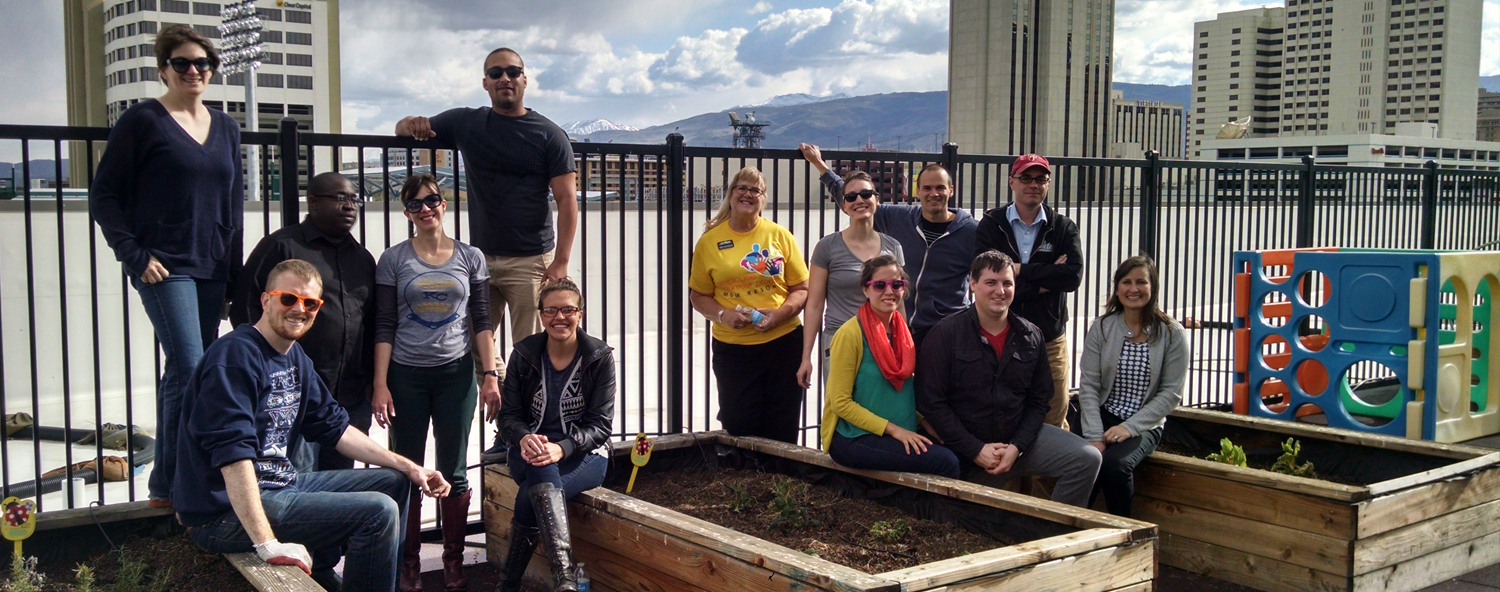
Vanguard
On March 24, BNIM announced that Gunnar Hand, AICP had been named to the 2015 Vanguard. This group, named by the international nonprofit media organization Next City, recognizes the top urban innovators under the age of 40 who are working to make change in cities.
At the Next City Vanguard conference I had the pleasure of becoming acquainted with not just my fellow 40 Under 40 finalists, but also “the biggest little city in the world.” I knew that becoming a Vanguard would open me up to a great network (more on that later), but I have to say I was pleasantly surprised by Reno, Nevada.
When you think of Nevada, the first thing that comes to mind is Las Vegas and desert. Lots of desert, and maybe Yucca Mountain. But Reno is only 30 minutes from Lake Tahoe. Sure, it gets about nine inches of rain per year, but it was founded along the Truckee River in a beautiful mountain valley. Reno competed with Vegas as the gambling capital for almost half a century, but having lost that battle decades ago, the City has embraced a truly innovative future. Unlike its neighbor far to the south, it is a real city (sorry, Vegas).
Las Vegas is to Los Angeles as Reno is to San Francisco, and many aware of the NorCal-SoCal divide. That same paradigm exists in Nevada. Downtown Reno, with its remaining and struggling large casino resorts, also happens to be less than a mile from the University of Nevada. As such, Reno’s downtown and midtown neighborhoods are seeing a renaissance of coffee shops, vertically integrated farm-to-market restaurants, urban agriculture, arts, and “Burner” culture (Reno is the last supply stop for Burning Man pilgrims and home to the only year round Burner hotel/art space/soup kitchen/community).
From TedX to the first 1 Million Cups outside the Kansas City region, Start-Up Row to a local food coop distributor, Reno kind of has it going on. They are converting bankrupt hotel towers to student housing, the university is considering moving its entire arts program to a new downtown campus, and Tesla is going to build its coveted battery factory in the area, which is projected to bring 6,500 Tesla jobs to Reno immediately, with a multiplier effect of 50,000 people moving to the region in the next decade. That is a huge bump in the local economy.
If Reno and its sister city, Sparks, are able to work together, they can prevent further suburban expansion and focus all of that development into a more long-term and prosperous revitalization of their respective city centers. The future is bright for Reno, and our tour along the way exposed us to all of these great entrepreneurs, artists, social movements, and more. I told myself long ago that I would never go back to Vegas. I would definitely go back to Reno, maybe on my way to Black Rock City.
So now, my reason for being in Reno—the Next City Vanguard Conference. By far the best part of being honored as a Vanguard was the people. Not just the Next City team, but all of the 2015 Vanguards and the more than 20 alumni who came back to relive the experience. It was the best conference I have ever attended, not because of the content of the panels and tours, but for the diversity of the people. It was not the usual conference of planners talking about what they are doing in their respective cities, but a myriad of experts who are all urbanists. The group included graphic designers, landscape architects, artists, urban education experts, web designers, chief innovation officers, professors, entrepreneurs, architects, planners, politicians, and policymakers from the public, private, academic, and foundation sectors.
Every conversation we had, even those that began as panel discussions, quickly turned into a dynamic conversation of the entire group. It was truly an un-conference. It was those conversations and the subsequent dialogue that not only bonded our group together into a collective force of change, but really started to help us see how each of our unique perspectives and efforts were working towards a common civic goal. It felt like a very organic, nationwide act of community consensus building.
And in between these moments, walking tours, and awesome food stops, we were assigned to groups to develop ideas for an end of session competition. Little did we know that 300 Renoites would pay $40 to attend our final session, where we presented tactical urbanism strategies for three sites in Reno. While my group did not “win” the $10,000 implementation prize for our project, we were the only group that actually completed an act of tactical urbanism. The day after the conference, several volunteers, many from the community and Vanguard who were not even in our group, planted a rooftop garden at the Volunteers for America’s (VOA) Homeless Family Shelterl, and connected VOA with Urban Roots (www.urgc.org), who are now partnering to provide weekly care and classes for the families who stay at the shelter. Quick shout out to Sandy Isham of VOA and Jeff Bryant of Urban Roots for collaborating, Team C, as well as Home Depot and Jonathan Ende of Seamless Docs for funding our little guerilla garden.
Cities are clusters of innovation and efficiency. As a microcosm of the city, my fellow Vanguards and I did more than talk about best practices. For a concerted period of time we truly engaged, participated, and contributed to our host city. Whether our ideas make a difference is to be determined, but we certainly left a cache of new partnerships, collaborations, and connections in our wake.


